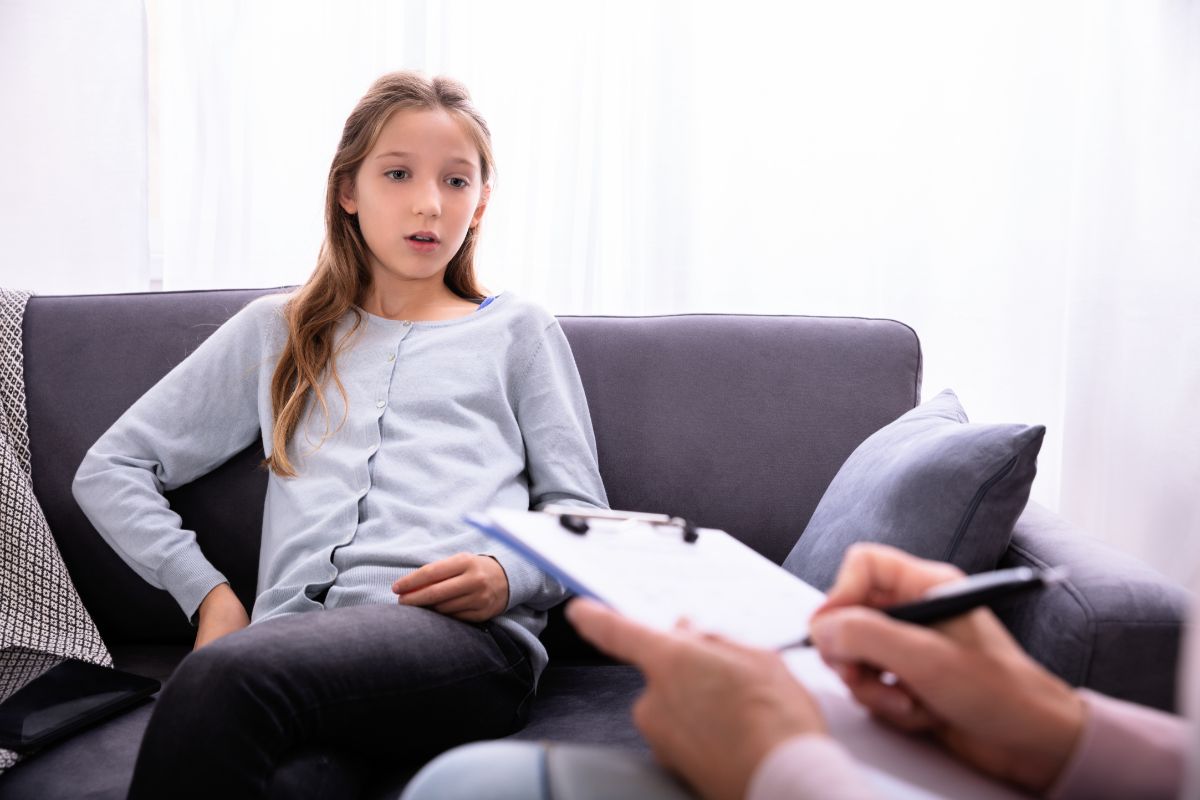
What is RAD: Reactive Attachment Disorder?
Reactive attachment disorder or RAD is described as a condition where a young child or infant does not or is incapable of forming a secure, healthy bond with their primary caregivers. This could be their biological parents or any other paternal caregiver figure. A child who struggles with reactive attachment disorder will often experience challenges managing their emotions and forming meaningful connections with others. In many cases, a child with reactive attachment disorder will appear fearful of caretakers and, unlike other children of the same age, be unable to find comfort or solace in their presence.
Understanding Reactive Attachment Disorder
The Diagnostic and Statistical Manual of Mental Disorders 5th Edition (DSM-5) classifies reactive attachment disorder as a trauma and stressor-related condition. It often affects children in infancy or early childhood due to social neglect and maltreatment. Although the root causes of reactive attachment disorder are related to situations or events of early childhood, without treatment at a treatment program like Beachside, where providers understand the unique treatment needs of adolescents and teens, the symptoms and difficulties related to reactive attachment disorder can extend well into adulthood.
Children and teens who are affected by reactive attachment disorder will have difficulty forming and maintaining relationships of all kinds. This includes significant challenges with emotional attachments to caregivers, family, and even significant others. They often struggle to “feel” or experience positive emotion and cannot accept (or seek out) physical or emotional closeness with others. In some cases, children and teens with RAD will react aggressively or violently when comforted, cuddled, or held. Mood changes associated with reactive attachment disorder can be erratic and unpredictable.
Signs and Symptoms of Reactive Attachment Disorder
In many cases, your child’s primary care provider may be the first to point out concerns about symptoms of reactive attachment disorder. How RAD presents depends greatly on a child’s age and development; however, concern usually arises out of difficulties or disturbances in social interaction. The primary symptom of reactive attachment disorder is “severely inappropriate social relating.” Depending on the child, this can present in various ways. Another common symptom includes failure to show a “typical” range of emotions when interacting with others. This can consist of feelings of comfort, remorse, guilt, or regret. Children and teens with RAD are often incapable of showing emotions of consciousness.
Conversely, a child with RAD may display inappropriate levels of affection towards strangers and those who are not a primary caregiver or members of their immediate family. In this case, while seeking attention and affection from others, they will demonstrate a lack of love for, or even fear of their primary caretakers. Other signs of reactive attachment disorder include avoiding eye contact and physical touch and unpredictable negative emotions such as anger, tantrums, sadness, irritability, and disobedience (beyond what would be expected based on the child’s age and environment).
As younger children with reactive attachment disorder develop into teens, their symptoms generally fall into two categories or patterns.
Inhibited Reactive Attachment Disorder Symptoms
In this category, children are aware of what happens around them, but they do not respond as expected to outside stimuli. They are often withdrawn and emotionally unresponsive. They may not show or seek affection from caregivers or loved ones, preferring to keep to themselves.
Disinhibited Reactive Attachment Disorder Symptoms
Opposite of the above, children with this pattern of symptoms may be overly (or abnormally) friendly with strangers. They prefer the presence and comfort of others over their primary caretakers. In many instances, children with disinhibited reactive attachment disorder act younger than their biological age and intentionally seek out affection and attention from others, often strangers, in unsafe and unhealthy ways.
Reactive Attachment Disorder Statistics
Definitive statistics surround RAD in children in teens are difficult to find. There are limited widespread surveys covering reactive attachment disorder, and those that are published contain older data from 2013 and earlier. The most recent data suggests reactive attachment disorder affects between one and two percent of children overall. Because children who experience trauma or abuse in their home environment are at a greater risk for developing RAD, the prevenance rate among children who have been removed from their home and placed in an alternate setting (such as foster care) is over forty percent.
Risk Factors and Causes of Reactive Attachment Disorder
Reactive attachment disorder is most common among children between nine months and five years of age who have experienced emotional or physical abuse and neglect in their home environment. Although not as common, a diagnosis of reactive attachment disorder can occur in older adolescents and teens as RAD is sometimes misdiagnosed as other mental health conditions. Children are at an increased risk of developing reactive attachment disorder if they were taken away from their biological parents (or primary caretakers) before forming a strong emotional bond or if they had many different foster care providers during infancy and childhood. Children who experience or were the victims of multiple traumatic events or losses during early childhood are also at an increased risk.
The exact causes of reactive attachment disorder are unknown. However, mental health professionals (and researchers) believe a lack of consistent caretaking and age-appropriate love and care contribute significantly to its development. Improper or inadequate caretaking can lead a young child to believe they are unloved, abandoned, or alone. Any of the above can prevent a child from developing a healthy and secure emotional bond with parents or caretakers.
Diagnosing Reactive Attachment Disorder
Reactive attachment disorder is a behavioral mental health condition attributed to an adverse history with caregivers and family during childhood. Unfortunately, abuse or trauma alone does not explain the entire cause of RAD, making misdiagnosis common and diagnosis challenging. Reactive attachment disorder is considered one of the least researched and most poorly understood mental health disorders. Because it is unclear how the disorder presents in children over the age of five, it can be difficult to correctly distinguish between RAD and various other teen and childhood mental health conditions.
According to the AACAP, the American Academy of Child and Adolescent Psychiatry, a child who exhibits symptoms of reactive attachment disorder needs a comprehensive assessment and an individualized treatment plan designed by treatment providers like those at Beachside who understand the challenges posed by RAD. It is also vital to rule out other mental health conditions which present with similar characteristics, such as various anxiety disorders, post-traumatic stress disorder, oppositional defiant disorder, various conduct disorders, and social phobias. It is also essential to rule out other causes such as autism spectrum disorder or ASD. ASD is a developmental disorder that affects behavior and communication that can present in similar ways to reactive attachment disorder.
Treating Reactive Attachment Disorder
Treating reactive attachment disorder at Beachside is focused on repairing broken and creating healthy family bonds. The goal of therapy is to improve emotional relationships between children and their parents or caretakers. Repairing these close relationships can also help children develop and enhance other healthy social and personal relationships. Both children in the treatment program and their family members can benefit from unique and individualized treatment plans.
Your child’s treatment plan at Beachside will include a combination of therapy, social skills intervention, and support for family and caretakers.
Psychotherapy
During counseling sessions, your child’s therapist will work with your child (and parents/caretakers) using evidence-based therapy models in various ways. Counseling sessions may be individual, or they may involve members of the family or just family members without child involvement. The goal of therapy is to help build skills and reduce negative or problematic behaviors to improve emotional and social skills.
Social Skills Interventions
Social skills therapies are used to help your child learn healthy, safer ways to interact with other children of similar age in social environments. Parents or caregivers are often involved in this therapy, so they can help the child use their new skills in future settings.
Family and Parenting Skills Interventions
Therapy sessions for parents are often used to help parents and caretakers learn healthy and more effective ways to manage their child’s behavioral and emotional challenges. This is especially beneficial for parents of children with reactive attachment disorder as discipline for children with RAD can be complex.
Many children who receive comprehensive, evidence-based treatment for reactive attachment disorder at Beachside form healthy, stable bonds with parents (caretakers) and others in their lives. This provides a healthy model that is vital to future relationships they look to develop as they grow. Children who do not receive treatment often risk struggling with ongoing emotional struggles related to the behavioral and emotional struggles they face with reactive attachment disorder. It is crucial to remember that even though RAD is often diagnosed in early childhood, it is never “too late” to seek treatment for reactive attachment disorder or any other developmental or mental health condition.
If you are a parent concerned about symptoms of reactive attachment disorder in your child, contact their primary care provider for a comprehensive evaluation and ask about a referral to a treatment program like Beachside. Like many mental health and chronic health conditions, early diagnosis and intervention can lead to more successful outcomes for your child as they work to overcome RAD symptoms.
The symptoms of reactive attachment disorder often closely mimic other childhood mental health struggles. Unfortunately, this can sometimes lead to misdiagnosis. If you are concerned about your child’s symptoms, it is essential to reach out to their primary care provider or the treatment team here at Beachside. Our caring and compassionate treatment team will work with you and your family to design a unique treatment plan focused on your child’s individual symptoms and needs. If you are ready to learn more about how treatment at Beachside can help your child learn healthily, safer ways to manage RAD symptoms, contact us today.
Sources




